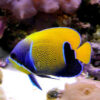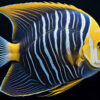Exploring the Combination of Dragons and Immortality Symbols in Chinese Culture

In Chinese culture, dragons and immortality are two central themes that are deeply intertwined in mythology, art, religion, and folklore. The dragon, a mythical creature with formidable strength and mystical powers, is often associated with imperial power, the forces of nature, and spiritual transcendence. On the other hand, the concept of immortality, particularly the pursuit of eternal life, has been a significant aspiration throughout Chinese history, reflected in numerous cultural practices, philosophical teachings, and religious beliefs.
This article explores how dragons and symbols of immortality combine in Chinese culture, illustrating how these two powerful symbols are represented together in art, literature, architecture, and rituals. From the quest for immortality in Taoism to the dragon as a symbol of eternal vitality, the fusion of these ideas offers a glimpse into the spiritual and philosophical depth of Chinese culture.
1. The Dragon as a Symbol of Immortality in Chinese Mythology
In Chinese mythology, the dragon is often depicted as a mystical creature that embodies immortality in its own right. Unlike Western dragons that are typically seen as destructive forces, Chinese dragons are benevolent beings, often representing power, authority, and good fortune. They are creatures that transcend the mortal realm, suggesting an inherent connection to the concept of eternal life.
1.1. The Dragon’s Connection to the Cosmos and Immortality
The dragon in Chinese mythology is often associated with water and the heavens, both of which are domains that transcend the mortal world. Dragons are believed to control natural elements such as rain, thunder, and rivers, all essential for the continuation of life on Earth. By governing these elements, dragons are seen as ensuring the cycles of life and death, symbolizing a continuous, eternal flow. Their ability to manipulate the forces of nature positions them as symbols of immortality in the natural world.
Moreover, Chinese dragons are frequently depicted as transforming into celestial beings, ascending to the heavens or dwelling in sacred mountains, further linking them to the immortal realm. The notion of transformation and transcendence is central to the idea of immortality in Chinese culture, and the dragon is often shown as a figure capable of attaining divine or eternal status, blending the earthly with the heavenly.
2. Dragons in Taoism: The Pursuit of Immortality
Taoism, one of China’s most influential philosophical and religious traditions, places a significant emphasis on immortality. Taoist teachings often discuss the idea of spiritual immortality, achieved through practices such as meditation, alchemy, and the cultivation of inner energy (Qi). The dragon, in Taoist symbolism, is intimately connected with these pursuits, acting as a guide and protector in the journey towards eternal life.
2.1. The Taoist Immortal Dragon
In Taoist philosophy, the dragon is often associated with the concept of Qi (the vital life force) and is believed to represent the cultivation of internal energy. Taoist immortals, also known as Xian (仙), are often depicted with dragon-like features or accompanied by dragons, symbolizing their mastery over life forces and their proximity to immortality.
The dragon’s association with immortality is further evidenced by its presence in Taoist temples and sacred sites. In these locations, dragons are often carved into stone, painted on walls, or represented in sculptures, signifying the connection between immortality and divine energy. These dragons are seen as embodying the purity of Taoist teachings and the harmony between the physical and spiritual worlds.
2.2. The Elixir of Life and the Dragon
In Taoist alchemy, the elixir of life (长生不老药, Chángshēng bùlǎo yào) is a potion that is believed to grant immortality to those who consume it. Dragons are frequently mentioned in connection with the elixir, often as the keepers of this powerful substance. In Taoist legends, it is said that only by achieving mastery over the dragon, or through the dragon’s guidance, can one obtain the coveted elixir.
One famous Taoist story involves the Eight Immortals (八仙, Bāxiān), who are often shown riding on dragons or accompanied by them. These immortals are spiritual beings who have transcended death, and the dragon’s role in their stories symbolizes their ability to navigate between the mortal and immortal worlds. The dragon, in this context, serves as a metaphor for the energy that connects the human soul to the cosmos and grants access to the secrets of immortality.
3. The Dragon and the Immortal Peach of Longevity
The Peach of Immortality (仙桃, Xiāntáo) is another significant symbol of immortality in Chinese culture, and its connection to the dragon further illustrates the union of these two powerful symbols. The peach is believed to grant eternal life to anyone who consumes it, and it is often associated with Xi Wangmu, the Queen Mother of the West, a Taoist goddess of immortality.
3.1. The Dragon and the Peaches in Chinese Art
In many ancient Chinese artworks, dragons and peaches of immortality are depicted together. Dragons are shown guarding or flying around the peaches, symbolizing the protection of the elixir of life. These representations can be found in paintings, sculptures, and even architectural designs, where the dragon’s powerful presence ensures that the peaches remain in the hands of the worthy. This imagery reinforces the idea that immortality is a divine gift, bestowed only upon those who are spiritually enlightened and aligned with the forces of nature.
In some interpretations, the combination of dragons and peaches is seen as a symbol of longevity and vitality. The dragon’s association with water and the natural world complements the peach’s connection to growth and regeneration, suggesting that the key to immortality lies in the harmonious relationship between the elements of nature and the spiritual world.
4. Dragons and Immortality in Chinese Feng Shui
In the practice of Feng Shui, the ancient Chinese art of harmonizing individuals with their environment, the dragon is often used as a symbol of vitality, protection, and immortality. Dragons are considered to be protectors of energy, and their presence is believed to enhance the flow of positive energy (Qi) and prevent the intrusion of negative forces.
4.1. The Dragon as a Symbol of Immortality in Feng Shui
In Feng Shui, the dragon is seen as a symbol of strength and vitality, often associated with the Yang energy, which represents active, life-affirming forces. This energy is linked to the idea of longevity and immortality, as it encourages growth, prosperity, and well-being. A well-placed dragon figure or artwork can help boost one’s life force and promote good health and long life.
The dragon’s association with water in Feng Shui also ties it to the idea of sustaining life. Water is a vital element in both Taoist philosophy and Chinese medicine, believed to nurture and replenish the body’s energy. Dragons that are depicted alongside water or in flowing, dynamic poses are thought to amplify the flow of life force, fostering longevity and vitality for those who interact with them.
5. The Dragon and Immortality in Chinese Literature
Chinese literature is rich with references to dragons and immortality, particularly in works that deal with legendary heroes, immortals, and spiritual journeys. These stories often depict dragons as guardians of immortality, guiding individuals on their quest for eternal life or protecting the secrets of the divine.
5.1. Classic Texts and Dragon Mythology
One of the most famous works that highlights the theme of dragons and immortality is the Journey to the West (西游记, Xī Yóu Jì), one of the Four Great Classical Novels of Chinese literature. In this epic tale, the monk Xuánzàng and his companions, including the legendary Monkey King, journey to the West to retrieve sacred Buddhist scriptures. Along the way, they encounter numerous dragons, each possessing their own unique powers and attributes.
The dragons in Journey to the West are often associated with immortality or the pursuit of divine knowledge. For instance, the dragon kings of the sea are considered to have control over the elements and the power to grant immortality. These dragons embody the dual concepts of life force and divine protection, guiding the protagonists toward their ultimate goal of enlightenment and spiritual immortality.
6. Conclusion: The Dragon as a Guardian of Immortality
The combination of dragons and immortality in Chinese culture is a rich and enduring theme that spans mythology, religion, art, and literature. The dragon, as a powerful and benevolent creature, is a symbol of vitality, transformation, and transcendence, often representing the forces of nature that sustain life. Its connection to immortality, whether through Taoist teachings, Feng Shui, or literature, reflects the deep spiritual and philosophical aspirations of the Chinese people.
Through the symbolism of the dragon and immortality, Chinese culture offers a unique perspective on the eternal struggle between life and death, the search for spiritual enlightenment, and the ultimate desire to transcend the limitations of the physical world. In this fusion of ideas, the dragon becomes not just a mythical creature but a powerful representation of the quest for eternal life and divine wisdom, remaining a central symbol in the spiritual and cultural consciousness of China.

